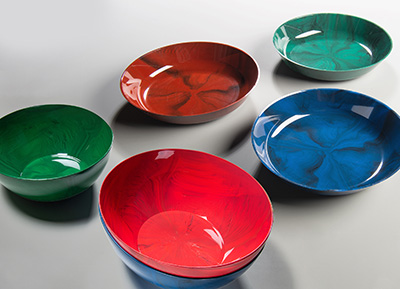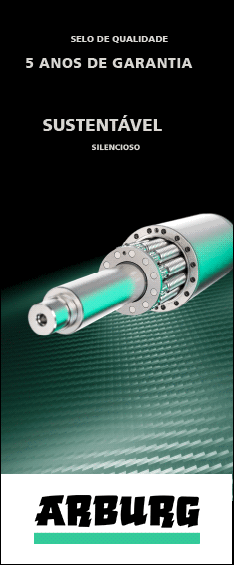| Plastics News |
BASF develops process to produce decorative marbling through standard injection molding
October, 5, 2021 - With a patent pending BASF technology it is now possible to produce marbled serial components made of Ultrason using a standard injection molding process. The coloring technique opens up virtually unlimited possibilities for designers to use BASF's polyarylethersulfone to color household appliances, catering bowls and containers as well as visible components. For the first time, surface effects such as color shades, color streaks and patterns can be reproduced: Injection-molded parts of one series look alike but are not completely identical. The technique has proven to be successful with the two injection-molding grades Ultrason E (PESU: polyethersulfone) and Ultrason P (PPSU: polyphenylsulfone) for the production of one-of-a-kind parts, which at the same time benefit from the properties of Ultrason in terms of mechanical, thermal and chemical resistance as well as approval for food contact. The new process, which was developed at BASF's pilot plant for injection molding and extrusion in Ludwigshafen, makes it possible to produce marbled molded parts on conventional injection molding machines more easily and with a greater degree of process reliability than before, using new types of nozzle inserts and a special dosing technique. With its lightly honey-colored tint, Ultrason granules are suitable for light shades and tints as well as abstract patterns by solid coloring that look like natural materials such as wood or marble. "Marble effects have always been an eye-catcher in the plastics world," says Georg Graessel from global Ultrason business development at BASF. "Until now, these effects were only possible with complex two-component injection molding and did not guarantee reproducibility. With marbling, we are adding another way of coloring to the already versatile design possibilities of Ultrason. With appropriate temperature control of the injection molding machine, attractive, high-contrast patterns are possible for our P and E injection molding grades. So far, our customers have been able to mold transparent, translucent, and, of course, solid-colored components from Ultrason." Marbled components made of Ultrason can be used in a variety of ways: in household articles such as bowls, cups, plates, and catering utensils, also for microwave usage. Additionally, marbling effects can be applied to eyeglass frames, handles as well as visible components of electrical and electronic appliances, decorative panels and covers. These applications benefit from the properties of BASF’s polyarylethersulfone: steam resistance up to 180°C, strength and toughness over a wide temperature range, resistance to industrial cleaning agents, and repeated sterilization. Ultrason also has the relevant food approvals for the EU and the USA. Marbling according to the BASF process is possible on conventional injection molding machines equipped with only one plasticizing unit and an open nozzle. The pre-colored base material and the high-contrast color masterbatch must be fed synchronously to the injection-molding cycle. The patterns in the molded part are then achieved by separating and merging the melt streams. This is done with nozzle inserts, which are manufactured by 3D printing. These inserts offer great design freedom: not only mirror-image patterns can be created but also rotationally symmetrical patterns. This has not been possible with conventional processes to date. Other factors influencing the pattern design are the nozzle design itself, the mold's gating system, the location of the gate, and the flow behavior of the melt during mold filling. In addition to PESU and PPSU, the new BASF technique is also suitable for Ultrason S and other thermoplastics. Ultrason is the trade name for BASF’s product range of polyethersulfone (Ultrason E), polysulfone (Ultrason S) and polyphenylsulfone (Ultrason P). The high-performance material is used to manufacture lightweight components in the electronics, automotive and aerospace industries as well as in water filtration membranes and in parts that come into contact with hot water and food. Because of their property profile the Ultrason grades can substitute thermosets, metals and ceramics in many applications. Source : BASF |


